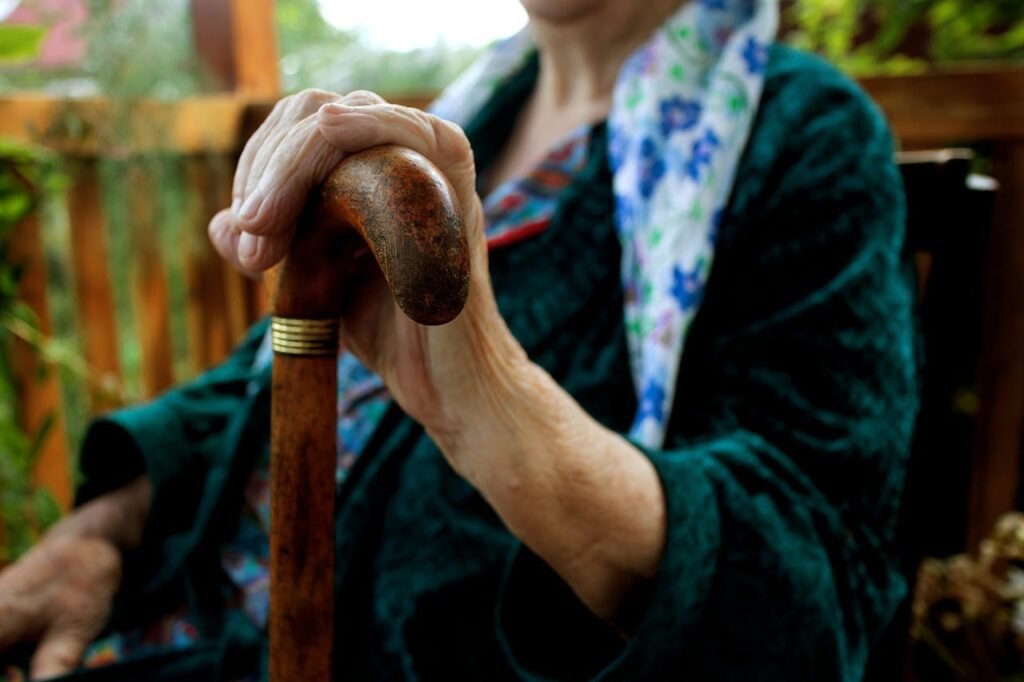Breathing and posture—two things we rarely think about, yet they quietly shape how we move, feel, and live every day. For seniors using prosthetic limbs, these two simple habits can make all the difference between feeling tired and feeling free.
Good breathing keeps your energy flowing, your mind calm, and your muscles ready to move. Proper posture, on the other hand, brings balance, comfort, and stability. Together, they turn walking, standing, and even resting into smoother, easier experiences.
At RoboBionics, we’ve seen how small changes in breathing and posture can transform lives. Seniors who once struggled with fatigue or imbalance often regain confidence just by learning how to breathe better and sit taller. These hacks don’t require special tools—only awareness, patience, and gentle practice.
In this guide, you’ll learn simple, effective ways to improve your breathing and posture. You’ll understand how they work together to support your prosthetic limb, ease daily movement, and restore comfort to your body.
Why Breathing and Posture Matter for Prosthetic Users
The Connection Between Breath and Movement
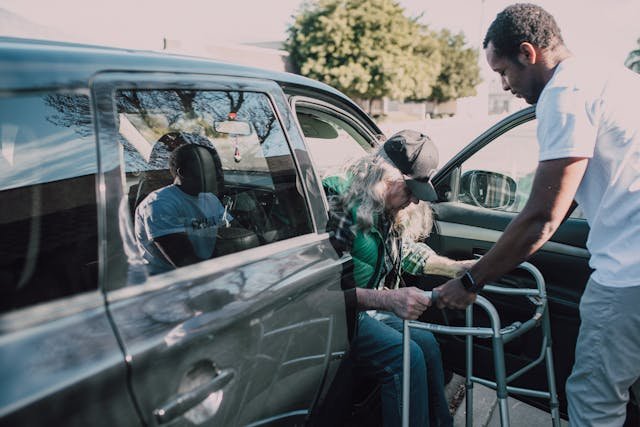
Breathing does more than keep you alive—it powers every movement your body makes. When you breathe deeply and naturally, oxygen flows smoothly to your muscles, giving them the energy they need to move with strength and ease.
For seniors using prosthetic limbs, this flow of breath becomes even more important. It helps control movement, reduce stiffness, and keep your body relaxed as you walk, stand, or sit.
Shallow breathing, on the other hand, limits oxygen and causes tension. It can make your body feel heavy, your steps less steady, and your focus harder to maintain.
How Posture Shapes Your Balance
Posture is how your body holds itself in space. It decides how your spine supports your weight, how your limbs move, and how your muscles share the load.
When posture is upright and relaxed, your balance improves naturally. Your prosthesis aligns better with your body, your breathing deepens, and movement feels lighter.
Poor posture—like slouching or leaning to one side—creates uneven pressure. Over time, that can cause pain in your back, shoulders, or hips. For prosthetic users, it can also make walking more tiring and less stable.
Working Together for Better Stability
Breathing and posture are partners. When you breathe properly, your posture improves. When your posture is balanced, your breathing becomes easier.
This teamwork helps your body stay strong and coordinated. It keeps your center of gravity steady, allowing your prosthesis to work efficiently without strain.
Think of your breath and posture as quiet helpers that keep your body calm and your movements graceful—especially as you age.
Understanding How Prosthetics Affect Breathing and Posture
Weight Distribution and Muscle Adjustment
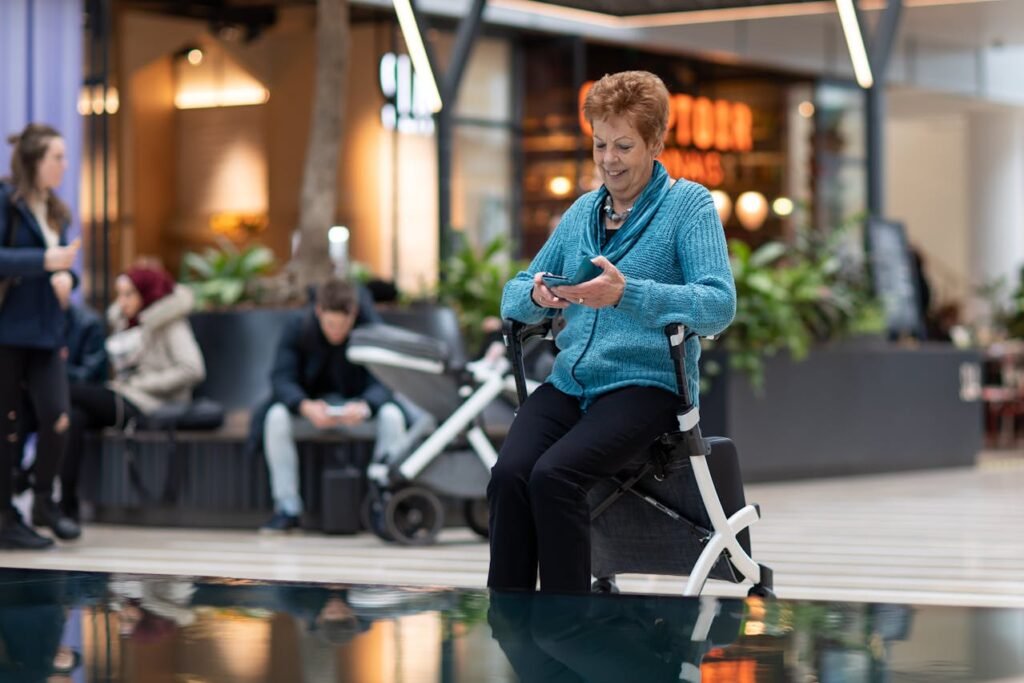
When you start using a prosthetic limb, your body takes time to adjust. Muscles that were once relaxed may now work harder to support balance.
This shift in effort can subtly affect breathing. If your posture tilts or your shoulders tighten, your chest may feel restricted, making deep breaths harder.
With gentle correction, these patterns can be reversed. As your posture improves, breathing naturally becomes fuller and more comfortable.
Center of Gravity Changes
Your body’s center of gravity changes after an amputation and again when you start using a prosthesis. It may shift slightly to one side or forward depending on your alignment.
If you lean too far in any direction, your breathing muscles—especially around the ribs and diaphragm—can’t expand fully. That’s why upright posture is vital. It gives your lungs and diaphragm space to work properly.
Balancing your weight evenly over both legs, including your prosthetic side, keeps your breathing stable and effortless.
The Emotional Link
Many seniors hold their breath without realizing it when they walk or try something new with their prosthesis. This often comes from fear of losing balance or falling.
When breathing becomes shallow, muscles tighten, making movement harder and confidence lower.
Calm, rhythmic breathing helps reduce this anxiety. It tells your brain that your body is safe and capable. The more relaxed you are, the more naturally you move.
The Role of Core Muscles
Your breathing muscles and posture muscles share the same space—your core. This area includes your stomach, back, and diaphragm.
Strong core muscles support both smooth breathing and stable walking. They help you stay upright without tiring quickly.
Even simple exercises that build awareness of your core can make a huge difference in your daily comfort and energy.
Simple Breathing Hacks for Daily Comfort
Diaphragmatic Breathing
Sit or stand tall. Place one hand on your chest and the other on your stomach. Inhale slowly through your nose, feeling your stomach rise gently while your chest stays still.
Then exhale through your mouth, letting your stomach fall. Repeat this rhythm for a few minutes.
This technique strengthens your diaphragm—the main muscle responsible for deep breathing. It also relaxes your shoulders and spine, making your posture naturally straighter.
Rhythmic Walking Breath
When walking with your prosthesis, coordinate your steps with your breathing. Try inhaling for two steps, then exhaling for two steps.
This rhythm keeps your pace steady and your body relaxed. It also helps you focus on balance rather than worry about each step.
Over time, this breathing rhythm will become natural, improving your gait and reducing fatigue.
The Calm-Down Breath
Sometimes, your body just needs to slow down. This technique helps release tension and bring your energy back to a calm state.
Sit or stand comfortably. Inhale deeply through your nose for four counts, hold for two, then exhale slowly through your mouth for six.
This longer exhale activates relaxation in your body, easing stiffness in your shoulders, neck, and chest.
You can use this anytime you feel anxious, unsteady, or tired during the day.
Expanding the Rib Cage
Good posture depends on flexible ribs that move freely with each breath. To practice this, sit upright and place your hands on the sides of your rib cage.
Take a slow, deep breath and feel your ribs widen outward. Exhale gently, letting them return to place.
This movement strengthens the intercostal muscles—small muscles between your ribs—and helps you breathe more fully.
It also opens your chest, reducing the slouched position that often leads to fatigue or imbalance.
Posture Hacks for Strength and Stability
The String Visualization
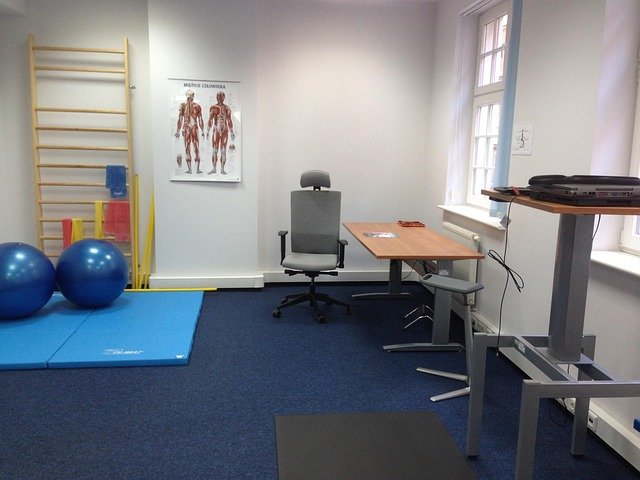
Imagine a gentle string attached to the top of your head, pulling you upward. This image helps you straighten your spine naturally without straining.
Let your shoulders relax, chin stay level, and body feel light. You’re not forcing your back to stay stiff—you’re simply letting your body grow taller and freer.
Practice this while sitting, standing, or walking. Over time, your body will remember this alignment even without the visualization.
Shoulder Opening for Better Alignment
Shoulders often round forward, especially when using a cane, walker, or just from habit. This tightens your chest and restricts breathing.
To open them, stand tall and roll your shoulders gently backward in circles. You can also clasp your hands behind your back and stretch slightly.
Doing this daily releases tension in your upper body and allows your lungs to expand fully during each breath.
Equal Weight Distribution
Stand in front of a mirror and notice where your weight rests. Many prosthetic users lean unconsciously toward the sound leg.
Shift your body slightly until both legs feel evenly grounded. Keep your knees relaxed and your hips level.
This even balance not only protects your spine and hips but also makes walking smoother and breathing easier.
Core Activation for Upright Support
Good posture comes from within. Engaging your core muscles provides a gentle lift that keeps your spine stable.
While standing or sitting, draw your belly in slightly—not by holding your breath, but by tightening your stomach gently.
This small action supports your back and improves your posture without strain. You can practice it anytime—while waiting in line, sitting at a table, or walking with your prosthesis.
Seated Posture Awareness
Sitting for long periods can make your lower back ache and your chest collapse.
To sit tall, place both feet flat on the floor and avoid crossing your legs. Keep your back supported but not pressed too hard against the chair.
Lift your chest slightly, keep your shoulders open, and take deep breaths. This position protects your spine and keeps oxygen flowing freely.
Advanced Coordination Between Breathing and Posture
Breathing with Movement
Once you’ve learned basic breathing and posture separately, the next step is combining them. Breathing with movement helps your body feel lighter, smoother, and more balanced during daily activities.
Try this while walking: take a slow breath in as you lift your prosthetic leg forward, and breathe out as your sound leg follows through. Keep your shoulders relaxed and your steps natural.
This coordination synchronizes your body’s rhythm. Each breath becomes a cue for controlled motion, keeping your mind calm and your muscles balanced.
Over time, your walk will feel effortless, and your energy will last longer throughout the day.
Using Breath to Reset Posture
Whenever you feel your back rounding or your shoulders slumping, use your breath to reset.
Inhale deeply through your nose, lifting your chest slightly as your spine straightens. Exhale slowly through your mouth, allowing your body to settle comfortably upright.
This small habit, repeated often, teaches your muscles the natural shape of good posture. It’s gentle and restorative—a quick reset you can use anywhere.
The Standing Flow Breath
Stand tall with both feet firmly on the ground. Inhale and imagine air filling your body from your feet up to your chest. As you exhale, feel that air flow down your spine and out through your legs.
This visualization connects your breathing to your sense of grounding. It encourages full-body awareness and helps align your posture from head to toe.
It’s especially useful before starting your day or before walking with your prosthesis.
Posture Checks Throughout the Day
Even with practice, posture tends to slip as we go about daily tasks. Setting gentle reminders helps maintain alignment without overthinking.
Each time you sit, stand, or walk through a doorway, pause for a quick check: Are my shoulders relaxed? Is my head level? Am I breathing deeply?
These small posture moments keep your body from drifting into tension and teach muscle memory for natural balance.
The Breathing Pause for Calmness
Sometimes, the best coordination comes from stillness. Stand comfortably and take one full breath—slow in, slow out—while focusing on how your body feels.
This simple pause resets both your posture and your emotions. It’s a reminder to slow down, breathe fully, and allow your body to find its own rhythm.
Even 10 seconds of calm breathing can reduce stress and restore focus.
Integrating Breathing and Posture into Daily Activities
Morning Start-Up Routine
How you begin your day sets the tone for your body. A few minutes of breathing and posture awareness in the morning prepares your muscles and mind for movement.
Sit at the edge of your bed, feet on the floor. Take three deep breaths, raising your arms slightly on the inhale and relaxing them on the exhale. Roll your shoulders back and lift your chest gently.
Before standing, place your hands on your thighs and feel your core engage as you rise. This mindful start wakes up your balance and helps your prosthesis align naturally.
Walking with Awareness
Walking is one of the best moments to practice breathing and posture together. Every step can become a rhythm of focus and flow.
Keep your chin level, gaze forward, and shoulders loose. Inhale as your prosthetic foot touches the ground, and exhale as your sound leg takes the next step.
If your prosthesis feels heavy or stiff, take slower, deeper breaths. This keeps your muscles relaxed and prevents tension from spreading through your back or neck.
Breathing gives your walk rhythm. Posture gives it grace. Together, they turn walking into a calming exercise rather than a chore.
Sitting with Purpose
Many seniors spend long hours sitting, but poor sitting posture can limit lung space and strain the lower back.
When sitting, keep your feet planted and your back lightly supported. Imagine lengthening your spine as you breathe in and softening your shoulders as you breathe out.
You can also add gentle seated movements—like slow torso turns or side stretches—to keep blood flowing and posture active.
Even sitting can be a form of balance training when done mindfully.
Standing Strong
Standing is one of the hardest tasks for prosthetic users because it requires continuous control. But posture and breathing can make it easier.
Keep your weight centered between both feet, even if your prosthesis feels lighter or less natural. Engage your stomach muscles slightly, and inhale deeply to lengthen your spine.
As you exhale, relax your shoulders while maintaining your height. The breath helps distribute tension evenly, giving you strength without stiffness.
Practicing this for a few minutes daily improves your endurance and confidence while standing.
Relaxing Before Sleep
At night, your body deserves release. Proper breathing and posture relaxation prepare your muscles to recover and rest deeply.
Lie comfortably on your back or side with your spine neutral. Place a pillow under your knees if needed. Close your eyes and take slow, deep breaths, allowing your belly to rise and fall.
As you exhale, let go of any tension in your shoulders, back, or residual limb. Each breath signals your body to unwind fully.
This simple bedtime routine improves sleep quality and reduces morning stiffness—a quiet way to thank your body for its effort.
Emotional Benefits of Breath and Posture Awareness
Building Confidence Through Calm
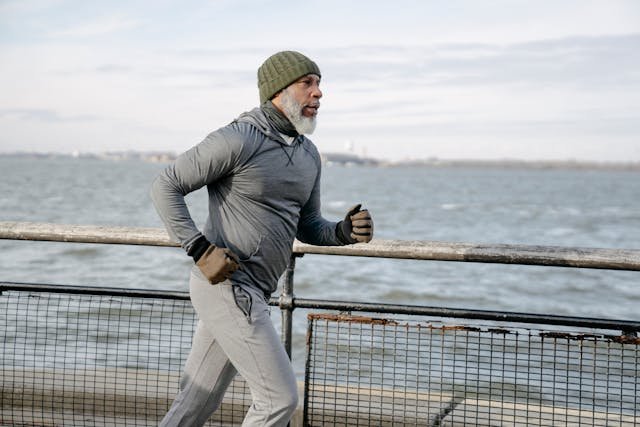
Confidence grows when your body feels under control. Calm breathing and steady posture remind your mind that you’re capable and safe.
When walking with a prosthesis, moments of self-doubt are natural. But steady breathing prevents panic, and good posture sends a signal of strength.
Confidence is not about perfection—it’s about trust. Each deep breath builds that trust a little more.
Reducing Anxiety and Fear of Falling
Many seniors experience a quiet fear of falling, especially when adjusting to new prosthetics. This fear often causes shallow breathing and tense posture.
By practicing deep, rhythmic breathing, you tell your nervous system to relax. Your muscles loosen, your body feels lighter, and your focus sharpens.
When your breath is steady, your movements follow suit. You start to walk with quiet courage rather than worry.
The Mind-Body Harmony
Your breath connects your body to your emotions. When you breathe shallowly, your body feels restless; when you breathe deeply, it feels safe.
Posture works the same way—slouching can make you feel tired, while standing tall can lift your mood.
By practicing both together, you nurture not just physical health, but emotional balance. You start feeling grounded, centered, and present in your body again.
Breathing for Pain Relief
Deep breathing also helps manage discomfort. It sends oxygen to sore muscles and calms your mind, reducing how strongly you feel pain.
If you experience tightness around your residual limb or back, focus on slow exhalations. Each breath helps your body release tension from the inside out.
Pain often fades fastest when your body feels safe, and proper breathing tells it exactly that.
Restoring Joy in Movement
Many seniors with prosthetics feel cautious or disconnected from their bodies. Breathing and posture help rebuild that connection gently.
When you breathe deeply and move upright, your body feels lighter. Movement becomes smoother, more rhythmic—something to enjoy again, not fear.
That small shift from effort to ease is where joy returns. Movement becomes a reminder of freedom, not limitation.
Long-Term Strategies for Lifelong Ease
Daily Five-Minute Check-In
Every day, take five minutes to check in with your body. Notice your breath—does it feel tight or open? Observe your posture—are you standing tall or leaning?
A simple reset each day keeps old habits from returning. You’ll catch small imbalances before they grow into discomfort.
The best part is how effortless it becomes. With time, your breath and posture naturally find their balance.
Combining Exercise and Breathing
Whether you practice yoga, chair stretches, or gentle walking, breathing makes every movement more effective.
Inhale as you prepare to move, exhale as you complete the action. This rhythm gives strength and control to each motion.
Even light strength exercises for prosthetic users become more powerful when guided by steady, intentional breathing.
Setting Up a Supportive Environment
Your environment affects how you breathe and move. Keep chairs at proper height, arrange lighting to prevent strain, and ensure your prosthetic fits comfortably.
When your surroundings support good posture, your body follows naturally.
Little changes—like placing a firm cushion behind your back or keeping a chair for stretching breaks—make everyday living more comfortable.
The Role of Regular Professional Guidance
Even the best habits benefit from professional advice. Regular visits to your prosthetist or physiotherapist ensure your alignment remains correct as your body changes.
They can teach advanced breathing or posture drills tailored to your prosthesis and daily routine.
At RoboBionics, we encourage seniors to combine our advanced prosthetic designs with guided therapy. The results are smoother movement, less strain, and greater independence.
Breathing and Posture as a Lifestyle
Breathing deeply and standing tall are more than exercises—they’re ways of living.
They remind you to slow down, to connect, and to trust your body again. With each breath and each upright step, you reclaim ease and confidence.
At RoboBionics, we see this transformation every day. Our prosthetic limbs are built to move with your body, not against it—supporting you as you rediscover strength, comfort, and grace.
If you’d like to explore how our designs and rehabilitation support can help you move freely again, we invite you to schedule a personalized demo at robobionics.in/bookdemo.
Breathe easy. Stand tall. Your body—and your prosthesis—are stronger than you think.



